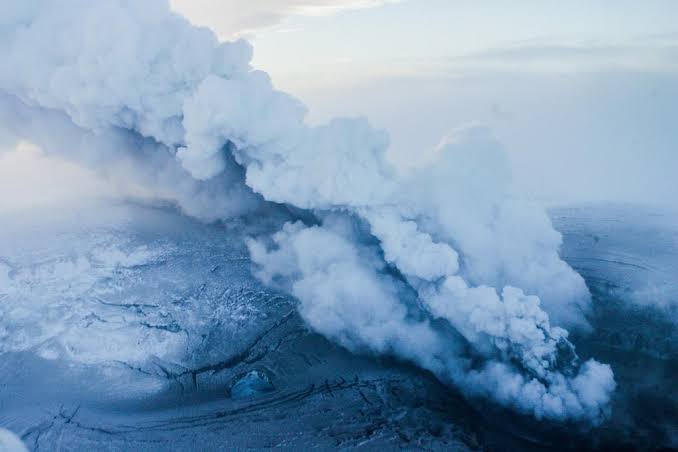**DISASTER IN ALASKA: Glacier Collapse Devastates Cruise Ship, Dozens Dead, Scores Missing**

**DISASTER IN ALASK: Glacier Collapse Devastates Cruise Ship, Dozens Dead, Scores Missing**
*By Julia Merrick | April 25, 2025 | Ketchikan, Alaska*
What was meant to be the scenic highlight of a dream vacation turned into a living nightmare early Friday morning, when a massive glacial collapse triggered a disaster of unprecedented scale aboard an Alaskan cruise. The luxury vessel *Northern Star*, carrying over 2,000 passengers and crew, was struck by a mega-wave caused by the sudden break-off of a glacier face, leading to flooding, panic, and tragic loss of life.
As of this afternoon, officials have confirmed **36 dead**, more than **70 injured**, and **eight still missing** in what is being called the deadliest maritime disaster in U.S. waters in over twenty years.
### A Perfect Storm of Nature and Tragedy
The incident occurred around 7:42 a.m. local time as the *Northern Star*, operated by Arctic Horizons Cruises, made its way along the Inside Passage toward the Twin Horn Glaciers—an iconic stretch often included in premium cruise itineraries for its breathtaking views of towering ice formations and potential sightings of calving events.
According to eyewitnesses and initial Coast Guard reports, the ship had slowed to a crawl to allow passengers time to take photographs and enjoy the view. Without warning, a massive slab of the glacier—estimated at nearly 300 feet high—sheared off and thundered into the sea below. The resulting impact generated a massive displacement wave that surged across the narrow fjord directly toward the cruise liner.
“We heard this deep, rolling sound—like the Earth was cracking open,” said passenger Lisa Hanley of Toronto. “Then there was this sudden blast of wind, and the water… it just came out of nowhere and swallowed the decks.”
The wave smashed into the starboard side of the ship with terrifying force, shattering windows, flooding cabins on multiple levels, and damaging several lifeboats. Passengers were thrown to the ground, and in the chaos, some were swept into the freezing waters. Onboard footage circulating on social media shows the moment of impact—screams erupting as furniture, glass, and people were tossed like debris.
Within minutes, power was lost in parts of the ship. Communications went dark. The emergency alarms sounded, but many of the lifeboats had been damaged or rendered inaccessible. Crew members struggled to manage the growing panic as freezing water began to pour into lower levels.
### Rescue Under Fire
The U.S. Coast Guard received a distress signal at 7:51 a.m. and launched immediate search-and-rescue operations from Ketchikan and Juneau. Rescue helicopters and response vessels arrived within the hour, but high winds and unstable ice conditions complicated the effort.
“We’ve dealt with calving incidents before, but nothing of this magnitude,” said Rear Admiral Seth Lorne, commanding officer of the Coast Guard’s Alaska district. “This was a freak natural event that hit at the worst possible time.”
Rescue divers entered the frigid waters in search of survivors, while helicopters winched stranded passengers from upper decks. Emergency medical personnel onboard airlifted at least 30 critical patients to hospitals in Anchorage and Seattle.
The death toll is expected to rise as search operations continue. Among the deceased are passengers from at least six countries, including the United States, Canada, the United Kingdom, Australia, Germany, and Japan.
### Questions of Responsibility
As the shock of the disaster reverberates around the world, questions are emerging about the decision to bring the ship so close to an increasingly unstable glacial front. Climate scientists have long warned that accelerated melting due to global warming is making glacier calving more frequent and unpredictable.
“This isn’t a freak event—it’s what we’ve been warning about for years,” said Dr. Aisha Ngu, a glaciologist at the University of Alaska Fairbanks. “The glaciers are under stress, and their behavior is changing rapidly. Allowing cruise ships this close is incredibly risky.”
Maritime safety experts are also examining whether Arctic Horizons Cruises followed proper safety protocols. While no-fly and no-sail buffer zones are often recommended around active glaciers, these are not consistently enforced by law. It remains unclear if the *Northern Star* was in violation of any specific regulations at the time of the incident.
The cruise line has yet to issue a full public statement, though a spokesperson briefly addressed the media outside the company’s Seattle headquarters.
“Our thoughts are with the victims and their families during this tragic time,” said spokesperson Eleanor Briggs. “We are cooperating fully with authorities and launching an internal review.”
### Survivors Speak Out
For the survivors, the trauma remains raw. Some described acts of heroism from fellow passengers and crew, while others criticized the lack of immediate guidance and preparedness onboard.
“It was total chaos,” said Marcus Bell, a honeymooner from Florida. “There was no plan. The crew were screaming just like the passengers. People didn’t know where to go. Some lifeboats were jammed or missing. If we hadn’t found a life vest in the hallway, we’d be dead.”
Others praised the emergency teams that arrived.
“I saw a diver pull a woman out of the water who was blue in the face,” said Mei Chen, traveling with her parents from Vancouver. “Those people are heroes.”
### A Nation in Shock
President Emilia Warren released a statement late Friday morning offering condolences to the victims and pledging federal support for the investigation.
“This is a heartbreaking day for the families of those lost and for our nation,” the statement read. “We stand with the survivors and all those affected by this catastrophe. We will ensure every question is answered and every safety measure reexamined.”
A federal task force, including the National Transportation Safety Board (NTSB) and the U.S. Geological Survey, is en route to Alaska to begin a comprehensive investigation.
In the meantime, grief counselors, emergency personnel, and international consulates are being deployed to assist survivors and their families as the true scale of the tragedy continues to unfold.
